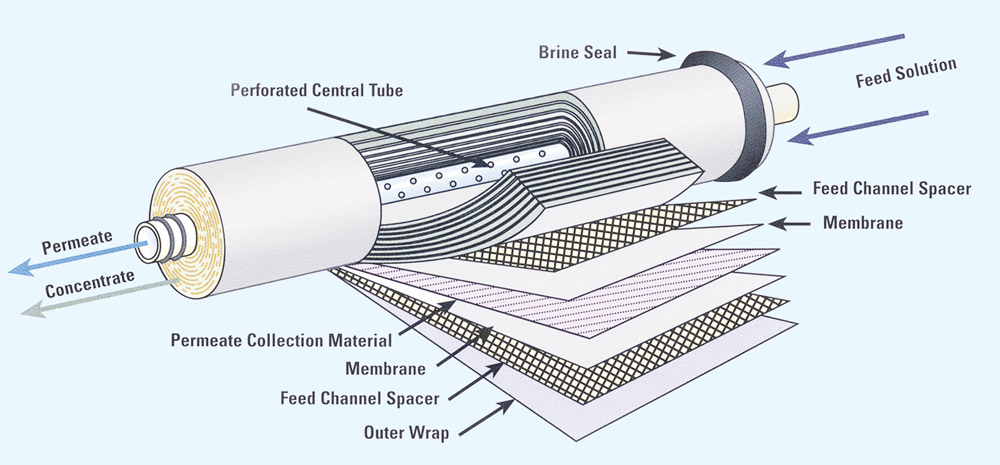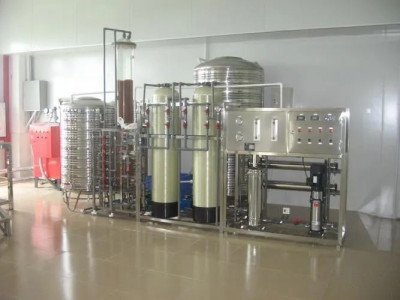Generally speaking, the main indicators of reverse osmosis membrane performance are recovery rate, water production and flux, and desalination rate.
July 4, 2023
-
Recovery Rate
The recovery rate of a reverse osmosis (RO) system is a vital indicator of its performance. Simply put, this metric tells you what proportion of the feed water is converted into usable, purified water. You can calculate it by dividing the amount of product water by the volume of feed water. A higher recovery rate suggests that a membrane is efficiently converting a larger proportion of the input water, which means less water is wasted.
However, it’s important to note that recovery rates aren’t uniform across all conditions. They are influenced by factors such as operating pressure, feed water quality, and temperature. For example, if the incoming water is heavily polluted, the recovery rate could decrease because the membrane will have to work harder to filter out contaminants.
-
Water Production and Flux
These two factors speak to the capacity of an RO system and the efficiency of the membrane.
Water production refers to how much purified water the membrane can produce over a certain period. This rate is typically measured in gallons per day (GPD) or liters per hour (LPH). A higher water production rate generally implies that the RO system is more efficient.
Flux, on the other hand, is a measure of the rate of water flow per unit area of the membrane. It’s typically given in gallons per square foot per day (GFD) or cubic meters per square meter per day. The flux depends on the operating pressure, membrane material, and feed water quality. Higher flux values suggest a more efficient membrane.
In an RO system, the total water production is calculated by multiplying the flux by the effective membrane area. By comparing these values, you can assess the performance of different RO systems or membranes.

Desalination Rate
The desalination rate is a measure of the membrane’s ability to remove salts and other dissolved solids from the feed water. RO membranes are expected to have high desalination rates – typically over 95%.
The ability of RO membranes to remove various contaminants is not uniform. Multivalent ions are usually easier to remove than monovalent ions. Complex ions are also more likely to be filtered out than simple ions. Organic substances with a molecular weight below 100 are more challenging to remove, as are nitrogenous compounds.
There are two ways to express the desalination rate: the apparent desalination rate and the actual desalination rate. The apparent desalination rate is calculated as one minus the ratio of product water salinity to feed water salinity. The actual desalination rate, on the other hand, factors in the salinity of the wastewater as well and also includes the concentration polarization coefficient. This coefficient, usually ranging from 1.1 to 1.2, accounts for the fact that the concentration of salts at the membrane surface is higher than in the bulk of the feed water.
Understanding these performance indicators allows users to select the most suitable reverse osmosis membrane for their needs. Other factors that can influence the choice of membrane include the cost, durability, and ease of maintenance. Moreover, while these indicators are the most common ones to evaluate the performance of an RO membrane, other specific conditions may require additional considerations. For instance, in industrial applications, it might be necessary to consider the ability of the membrane to withstand exposure to specific chemicals. In domestic settings, factors like ease of installation and operation might be more important.
To summarize, the performance of a reverse osmosis membrane can be evaluated based on its recovery rate, water production rate and flux, and desalination rate. However, these indicators should be considered in the context of the specific application and feed water quality. To ensure the efficient and reliable operation of an RO




